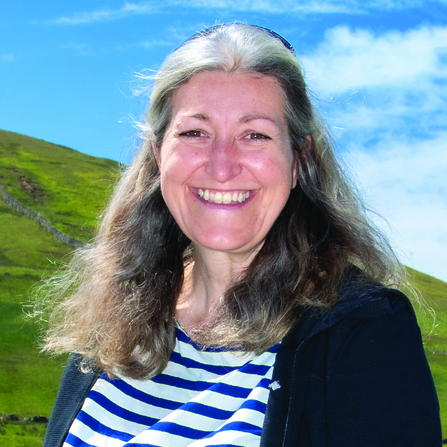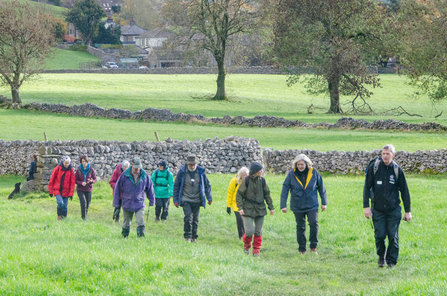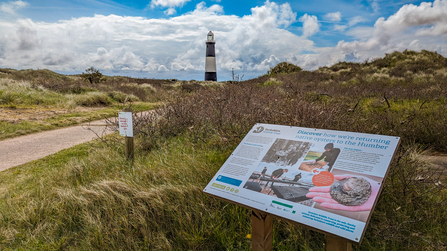
YWT CEO Rachael Bice talks to Telling our Story Volunteer Sara about her inspiring journey into wildlife conservation - YWT
Spurn Point Lighthouse and Cloud (c) Sara Spillett

YWT CEO Rachael Bice talks to Telling our Story Volunteer Sara about her inspiring journey into wildlife conservation - YWT
Can you tell us a bit about yourself and how you ended up working in conservation?
I am a passionate person who wants to make a difference in the world. I’m curious and interested in depth of experience; in particular, what is going on between people, organisations and ecosystems.
I meandered into conservation. My background is a degree in land economy (a pre-curser to today’s environmental economics) and then a MSc in Equine Science and MA in Anthrozoology. My full-time working life began at Hartpury College in Gloucestershire. Whilst working with horses, managing people and teaching students might all sound rather gentile, stud work, breeding and raising sports horses meant I grew up quickly. There was more life, death and learning than in a stables that was just focused on riding.
Keen to return to be with my family in Cornwall, I took a job on a graduate training course with Coastline Housing, a social housing provider, working on their asset management strategy. There I was exposed to some perspective-forming ideas: one from Dr Stephan Harrison, a glaciologist who talked about climate change potentially resulting in a 15m sea level rise, and the other from co-founders of the Eden Project, Tim Schmidt and Chris Hines (founder of Surfers Against Sewage) thinking on the ‘triple bottom line’, that is thinking of society, the economy and environment as all interconnected.
Soon after this role I joined Cornwall Council, where I worked with a really great team of public servants committed to their place. In 2007 the Council was becoming a unitary authority and then the 2008 crash created the subsequent decade of austerity. During this time it became the norm for staff to have to apply for a job every couple of years. Starting initially as an admin temp in the waste department, my role developed to focus on helping people to recycle and then onto wider waste policy issues, where I swiftly learned that there is no ‘away’ - nothing can be thrown away, it all goes somewhere!
What moment first sparked your interest in conservation?
While working for the Council I became involved with the Natural Change initiative, and had the opportunity to undertake a number of wilderness experiences in Scotland and the US focussed on catalysing sustainable leadership. This was what really sparked my enthusiasm for nature as it was as wild as you can get: 24 hours in one spot with all the elements and the wildlife. My key take-home learning was that if you want to make a difference you should start where you are and dig-in - literally and metaphorically.
Now consumed by a passion for Cornwall, the natural world and the plight of our environment, my role developed further and extended across areas such as the historic environment, national landscapes, flood and coastal risk management and environmental partnership working. While pioneering the concept of environmental growth and supporting the Council to get an ambitious climate change plan in place, I became increasingly interested in people and I learned how to bring the human element into the organisation’s work. And after several promotions I was managing a large team stretching across a range of different aspects of environmental sector.
It was at that point I decided that I needed to invest in my own career. I joined Homeward Bound, a leadership programme for women in STEM (science, technology, engineering and mathematics) which took me to Antarctica. Along with 80 other women from 26 different countries, I had a brilliant experience that demonstrated how groups can come together with great leadership. The shout of ‘whale’ would bring all leadership discussions to a halt, with students rushing to the deck to see what was passing! A key part of the learning from the programme was that often women don’t back themselves for job opportunities. During this experience I realised that I wanted to work in service to the more-than-human world. When I saw the Yorkshire Wildlife Trust CEO role advertised, I thought perhaps I could do that! The rest as the saying has it, is history.

Rachael with Grass Woods Volunteers - (c) Sara
What does the average day of a CEO look like?
I joined YWT in 2019. It was just 6 months before the first Covid lockdown. Those days are fortunately long-passed, and now my varied role is to unblock things - if it was easy it wouldn’t make it to my desk, as we have a very capable team! Most days can be divided into four areas:
What is one of the biggest challenges which YWT faces?
The most frustrating thing is wanting to have more resources for the Trust’s work, as it would mean more opportunities to support our wildlife at both landscape scale and locally, with those communities who would benefit most from being surrounded by more wildlife. I see the environment and the climate crisis becoming more negatively politically charged, which is of real concern.
What is your favourite YWT reserve?
When I have down-time, my favourite Trust reserve is Spurn. A unique place, so valuable for wildlife and highly designated, it is a place of peace and a representation of the wild coastal landscapes of the past, even though it is functioning part of the mouth of the bustling River Humber and there is innovative restoration work happening there. It has a long history and a particularly precarious future, considering rising sea levels. If you haven’t been, you must go!

Spurn Point is Rachael's favourite YWT reserve: as she says, "it is a place of peace and a representation of the wild coastal landscapes of the past... If you haven't been, you must go!" - (c) Sara
How often do you get out on site to meet volunteer and staff?
I see the volunteers and staff as critically important, and do what I can to meet them. All the Trust’s people are key, be they specialist naturalists; finance experts; or the communications people. My own volunteering means doing more of the day job. We need a new paradigm for leadership that gives space to the truth of being a whole human being, including not being unreasonable in our expectations of leaders. The more-than-human world needs us to open-up, to share our humanity to make organisations more effective and kinder all beings. My heart is with all the people and species we work on behalf of, so they have a tomorrow.